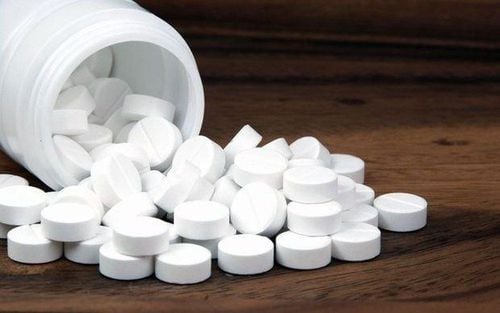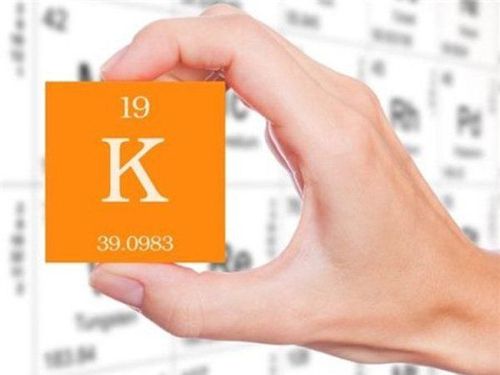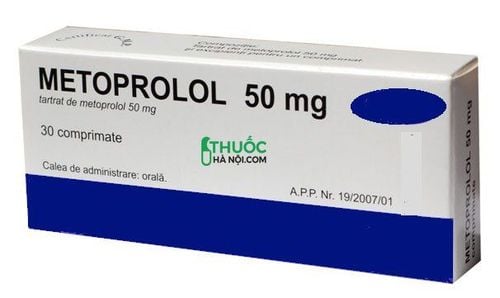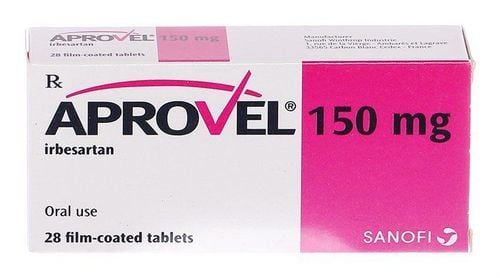This is an automatically translated article.
The article is professionally consulted by Master, Doctor Phan Ngoc Toan - Resuscitation - Emergency Doctor - Emergency Department - Vinmec Danang International HospitalHyperkalemia is an electrolyte disorder that can be life-threatening if not diagnosed and treated promptly. Treatment of hyperkalemia needs to be quick and urgent.
1. What is Hyperkalemia?
Normally, serum potassium concentration is maintained at 3.5-5.5 mmol/l. Hyperkalemia is defined as the serum potassium level exceeding 5.5 mmol/L. Hyperkalemia depends on the severity and response of each case, with different symptoms of severe or mild. However, the degree of hyperkalemia is usually based on the serum potassium concentration index, from which there will be an appropriate management attitude for each case.
1.1 Degree of hyperkalemia
Mild hyperkalemia: 5.5-5.9 mmol/L, Moderate hyperkalemia: 6.0-6.4 mmol/L, Severe hyperkalemia: ≥6.5 mmol/L. Severity of hyperkalemia on a high-pointed (early)
T electrocardiogram. PR prolonged, P flattened, QRS dilated (risk of arrhythmia). Loss of P wave, sine wave (QRS and T intermingled). Ventricular arrhythmia, asystole. The severity of the electrocardiogram usually increases with the serum potassium level, but it is important to note that the serum potassium level in each patient does not necessarily have the same degree of ECG disturbance.
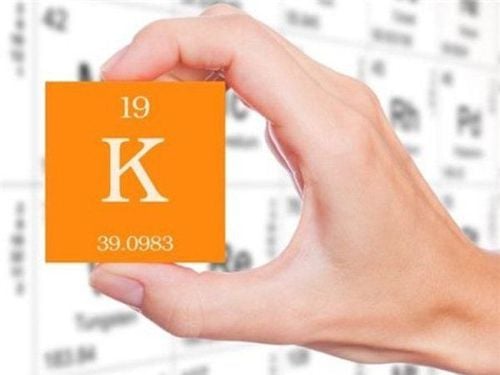
1.2 Clinical manifestations of hyperkalemia
Clinical symptoms often appear late, when blood potassium is greatly increased, especially when hyperkalemia is acute and symptoms affect the nervous system, heart and skeletal muscle:
Neuropsychiatric disorders : Itching , numbness, paresthesia, especially around the mouth and lower extremities lethargy, confusion, mental disorders. Rhabdomyolysis: Fatigue, muscle weakness, loss of tendon reflexes, sometimes flaccid paralysis, dyspnea and pulmonary hypoventilation due to respiratory muscle paralysis. Heart: Arrhythmia, cardiac arrest; urinary disorders; smooth muscle: vomiting, diarrhea, sometimes paralytic ileus. More serious symptoms of hyperkalemia include: Slow heart rate and weak pulse. Severe hyperkalemia can lead to fatal cardiac arrest. In general, a slow rise in potassium (as in chronic kidney failure) is better tolerated than a sudden increase in potassium. Unless the rise in potassium is very rapid, symptoms of hyperkalemia are usually not apparent until potassium levels are very high (usually 7.0 mEq/l or higher).
2. Treatment of hyperkalemia
2.1 Mild hyperkalemia
When hyperkalemia is mild, patients with few clinical or electrocardiographic symptoms will often be managed without hospitalization, especially if the patient's general condition is stable and in the absence of comorbidities such as acidosis or impaired renal function. Patients will be examined, checked blood potassium levels, kidney function, drugs being used, diet ... adjusted with oral drugs or changed drugs being treated accordingly. Make an appointment for a follow-up visit after 3-5 days according to the instructions of the medical staff.
2.2 Severe hyperkalemia
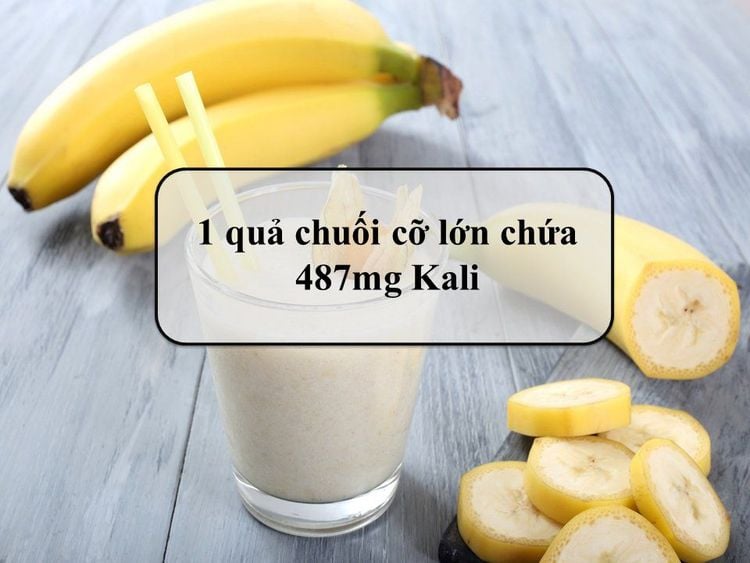
2.2.1. "Pseudo-"hyperkalemia" When serum potassium levels are elevated above the diagnostic threshold for hyperkalemia but no cause for hyperkalemia can be found and there are no clinical or electrocardiographic symptoms, the The following causes:
The blood collection site is too long, causing anemia. RBC rupture when taking samples for testing. Excessive white blood cell count (> 100 G/L) or thrombocytosis (> 600 G/L) causes the blood sample to clot and release potassium from the cells. In these cases, blood potassium levels should be re-checked before starting treatment measures.
2.2.2. True hyperkalemia When having hyperkalemia, the patient needs to reduce potassium in the diet such as reducing the intake of bananas, tomatoes...
With severe cases of hyperkalemia, the patient may appear disordered. Cardiovascular disease, sometimes death quickly if not given emergency and timely treatment. Therefore, when there is hyperkalemia associated with changes in the electrocardiogram or clinical symptoms, immediate measures should be taken to reduce the serum potassium concentration rapidly.
In severe cases, the patient needs to be monitored with electrocardiogram, SpO2, placed an intravenous line, prepare drugs and emergency equipment for hyperkalemia, prepare an electric shock machine (if any).
Measures necessary to take to normalize blood potassium levels from mild to severe (these measures need to be prescribed by a specialist doctor according to medical orders, not allowed to be done at home without your consent. medical staff control).
1.Protect the heart: cell membrane stabilizers
- Calcium gluconate or Calcium chloride.
- Indicated when hyperkalemia is accompanied by electrocardiographic manifestations.
- No hypokalemic effect.
- Dosage: 10 mmol Ca++ (3g Calcium gluconate or 1g Calcium chloride), slow intravenous injection over 10 minutes.
- Effects after 3 - 5 minutes, lasting 30 - 60 minutes.
- Can be repeated after 5 minutes if there is no effect.
Note:
-Caution in patients taking digoxin: slow intravenous injection (30 minutes).
-Contraindications: digoxin poisoning.
2.Transport potassium into cells:
-Insulin phase glucose intravenous infusion:
Indicated when the level of potassium increases from moderate to severe. Mix 10 units of insulin in a glucose solution (25 g glucose: 125 mL 20% sugar) intravenously over 15 - 30 minutes. Effects after 15 minutes, peak after 60 minutes, lasting for 2-3 hours. Pay attention to the risk of hypoglycemia. -Salbutamol nebulizer:
Indicated when the level of potassium is moderate to severe. Nebulize 10 - 20 mg of salbutamol. The effect starts after 30 minutes, lasts 2-3 hours. Salbutamol should not be used as monotherapy in the treatment of severe hyperkalemia. Caution: patients with heart disease (due to drugs that increase heart rate). -Alkaline solution:
Only used when severe metabolic acidosis causes hyperkalemia. Severe hyperkalemia: sodium bicarbonate 8.4% (1 mmol/mL) 1 - 3 ml IV over 5 minutes Moderate hyperkalemia: sodium bicarbonate 8.4% (1 mmol/mL) 1 ml IV over 30 minutes . The onset of action: 30 - 60 minutes, lasting 2 - 3 hours. 3. Elimination of potassium from the body:
- Loop diuretics:
Use furosemide early, maintain an adequate urine output. -Ion exchange resin:
Indicated in the treatment of moderate and mild hyperkalemia. Kayexalat 15 g x 4 times/day, orally or rectally 30g x 2 times/day. Start working after 1 hour (enema), up to 6 hours (oral), clear effect within 1-5 days. There may be undesirable effects on the gastrointestinal system or hypernatremia. -Extrarenal dialysis:
The most effective measure to remove potassium and correct other RLs. 4.Monitor and treat the cause
Continuously monitor the electrocardiogram on the monitor, do 12-lead electrocardiogram periodically. - Blood potassium test: at 1-2-4-6 hours from the start of treatment.
- Goal: lower potassium < 6 mmol/L after 2 hours.
- Test capillary blood sugar: before giving insulin, 15-30 minutes, then every hour for 6 hours.
Treat the cause - Treat the cause of the hyperkalemia.
- Stop drugs and foods that contain potassium or cause hyperkalemia.
Some notes in the treatment of hyperkalemia - Use caution when using calcium in patients taking digoxin.
- Salbutamol causes tachycardia.
- Diabetic coma patient with hyperkalemia:
Treatment with insulin and intravenous fluids, blood potassium will decrease during treatment. Only give bicarbonate when the acidosis is very severe (pH < 7.0). Careful monitoring of blood potassium, potassium replacement according to treatment guidelines to avoid the risk of hypokalemia.
Please dial HOTLINE for more information or register for an appointment HERE. Download MyVinmec app to make appointments faster and to manage your bookings easily.





